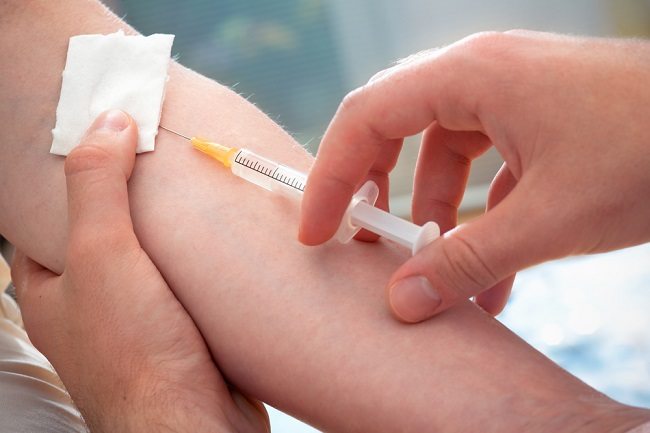Thrombophilia is a condition in which the natural process of blood clotting in the body is increased. Thrombophilia is often referred to as thick blood disease.
Thrombophilia has no symptoms. However, blood clots that form as a result of excessive blood clotting can be dangerous. Blood clots can occur in arteries and veins. Arteries are blood vessels that function as channels to drain blood to organs and body tissues, while veins are blood vessels that function as channels to return blood from organs or body tissues to the heart.
Blood clots that occur in the veins, or commonly known as deep vein thrombosis, is the most frequently encountered problem. Symptoms that usually appear are swelling and pain in the legs, and the skin looks red. This condition can cause complications in the form of pulmonary embolism, which is when a blood clot escapes into the pulmonary arteries. Symptoms that arise when a pulmonary embolism occurs are chest pain, pain when coughing, shortness of breath, or even decreased consciousness.
Blood clots can also occur in other parts of the body, such as the brain and heart, resulting in a stroke or heart attack at a young age. In addition, thrombophilia is at risk of causing problems during pregnancy, such as recurrent miscarriage or preeclampsia.

Causes of Thrombophilia
Thrombophilia arises due to an imbalance in the body's natural substances that play a role in the blood clotting process, one of which is due to inherited (hereditary) genetic factors. Thrombophilia associated with this genetic factor has several types, namely:
- Protein C, protein S, or antithrombin III deficiency.Protein C, protein S, and antithrombin III are natural body substances that are anticoagulant or function to prevent blood clots from occurring. When the amount of these substances is reduced, the process of preventing blood clots will also be disrupted. As a result, blood clotting will increase. Apart from heredity, this condition can also be caused by a disease, such as kidney disease.
- Prothrombin 202110. Prothrombin is a protein that helps the blood clotting process. In this condition, the production of prothrombin increases so that clotting occurs excessively.
- Factor V Leiden. Similar to prothrombin 20210, Factor V Leiden is also a type of thrombophilia caused by a genetic disorder. However, the location of the gene mutations that occur in factor V Leiden and prothrombin 20210 is different.
Apart from being caused by heredity, thrombophilia can also be caused or triggered by several other factors, such as:
- Age increase
- Pregnancy
- Immobilization or not moving for a long time
- Inflammation
- Obesity
- Antiphospholipid syndrome
- Sickle cell anemia or hemolytic anemia
- Cancer
- Diabetes
- Use of birth control pills
- Currently undergoing hormone replacement therapy
Diagnosis of Thrombophilia
A person who has a blood clot at the age of under 40 years, should be suspected of having thrombophilia. In addition, to diagnose thrombophilia, the doctor can perform a blood test and this blood test can be done repeatedly. However, there are some provisions regarding the time before the test is carried out.
For patients who suffer deep vein thrombosis or pulmonary embolism, often having to wait weeks or months after recovery, to have tests. Likewise, patients taking blood-thinning drugs (anticoagulants), such as warfarin, can only be tested 4-6 weeks after drug use has been discontinued.
When the blood test that is done shows that the patient has thrombophilia, then further tests will be done to get more detailed results. Patients will be advised to consult directly with a blood specialist (hematologist).
Thrombophilia Treatment
People with thrombophilia generally do not need treatment. However, doctors need to see how much risk there may be due to increased blood clotting. The amount of risk that exists depends on:
- Age
- Lifestyle
- Medical history and currently used
- Type of thrombophilia suffered
- Weight
Drug use is usually intended to treat complications of thrombophilia, such as: deep vein thrombosis or pulmonary embolism. Drugs used to treat excessive blood clotting in the body are blood thinners, such as warfarin or heparin.
Warfarin is a blood thinning drug that is heavily influenced by food and other drugs that are also consumed. In order for treatment to be effective, the doctor will increase or decrease the warfarin dose according to the results of the INR blood test. INR serves to assess a person's blood clotting time. Consult a doctor about the recommended INR value, to prevent the formation of blood clots again.









